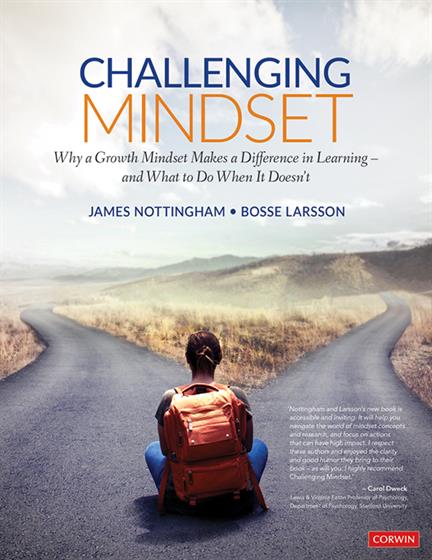List of Figures
The Challenging Learning Story
Preface
Acknowledgements
About the Authors
PART I WHAT IS MINDSET?
Chapter 1: A Tale of Two Mindsets
1.0. Definition of Mindset
1.1. A Comparison of Fixed and Growth Mindsets
1.2. What Difference Does Mindset Make?
1.3. Mindset Is Not Black and White
1.4. Mueller and Dweck Results
1.5. We Are All a Mix of Mindsets
1.6. A Fixed Mindset Might Be More Common Than We Care to Admit
PART II WHAT IS THE IMPACT OF MINDSET?
Chapter 2: Growth Mindset Implementation Is Not There (Yet)
2.0. Growth Mindset Effect Size
2.1. Reduced Efficacy 1: Third-hand Knowledge
2.2. Reduced Efficacy 2: Mindset Is Made to Sound Too Easy
2.3. Reduced Efficacy 3: Too Much Performance-Focus, Not Enough Time
2.4. Reduced Efficacy 4: Influences Are Complex
2.5. Reduced Efficacy 5: Mindset Affects Qualities Other Than Achievement
2.6. What Are the Criticisms of Growth Mindset?
Chapter 3: When Does Mindset Work Best?
3.0. Goals, Strategies and Expectations
3.1. Mindset Works Best When Goals Are Learning-Orientated
3.2. Mindset Works Best When There Is Challenge
3.3. Mindset Works Best When There Is a Chicken and an Egg!
3.4. Mindset for Lifelong Learning
3.5. Mindset Without Shame
PART III HOW DOES MINDSET INTERACT WITH EDUCATION?
Chapter 4: Mindset in Education
4.0. Introducing Alisha and Zack
4.1. Alisha and Zack’s Backgrounds
4.2. Alisha and Zack Start School
4.3. Alisha and Zack Meet Their Teachers
4.4. Alisha and Zack Discover Their Talents
PART IV WHAT IS YOUR CURRENT REALITY?
Chapter 5: Do You Have a Growth Mindset Culture?
5.0. What Are We Aiming to Achieve?
5.1. How Much Progress Have We Made So Far?
5.2. Collecting Your Evidence
5.3. What Next?
PART V HOW CAN YOU BUILD A GROWTH MINDSET?
Chapter 6: Privilege Progress
6.0. The Origins of Intelligence Testing
6.1. Administering Tests the Growth Mindset Way
6.2. Draw Attention to Progress
6.3. Progress–Achievement Quadrants
6.4. Different Forms of Progress
6.5. Your Students Are Already Making Progress
Chapter 7: Use the Power of Yet
7.0. The Power of Yet
7.1. The Power of Yetis
Chapter 8: Choose Challenge
8.0. Mindset Matters Most When There Is Challenge
8.1. When Students Pick the Easier Path
8.2. Encouraging Students to Choose the Challenging Path
8.3. Mindset Through the Learning Pit
Chapter 9: Be Careful with Praise
9.0. Different Types of Praise
9.1. To Praise or Not to Praise?
9.2. Praise and Cheating
9.3. Praise and Self-Efficacy
9.4. Praise, Rewards and Mindset
9.5. When to Praise
9.6. Praise in Practice
Chapter 10: Flopped Learning
10.0. Flops Lead to Enhanced Learning
10.1. Flopped Products
10.2. Flopped Feedback
10.3. Flopped Parents
10.4. Effort Is Not Enough
10.5. Resilience and Grit
10.6. Flopped Previews
10.7. Flopped Leading
PART VI WHAT NEXT?
Chapter 11: Growth Mindset Lessons
11.0. Learning Challenge Lessons
11.1. How Much Can Emily Influence Her Future?
11.2. Was Usain Bolt Born to Be an Olympic Champion?
11.3. Is Challenge Interesting?
References
Index



